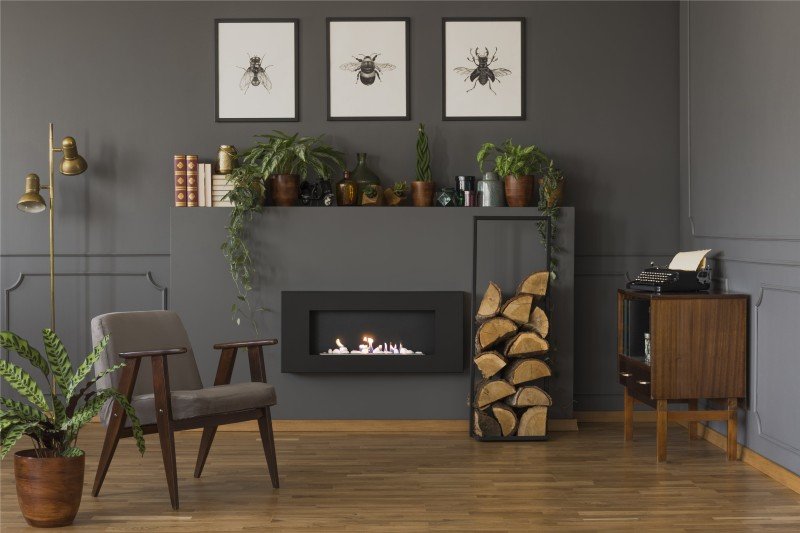The Timeless Appeal of Traditional Fireplaces in the UK
Traditional fireplaces have long been integral to homes across the United Kingdom, going beyond mere energy to become focal points of heat, convenience, and aesthetic beauty. This article delves into the long-lasting appeal of traditional fireplaces, exploring their history, design variations, setup considerations, and their modern-day relevance.
Historical Significance of Fireplaces
The fireplace has actually played a central role in British homes because medieval times. Initially, they were vital for heating and cooking. Over the centuries, with the development of main heating and technological improvements, fireplaces have actually changed into signs of heritage and design.
Key Historical Milestones
| Date | Milestone | Description |
|---|---|---|
| 12th Century | Intro of Chimneys | Enabled indoor fireplaces to be common, enhanced ventilation. |
| 16th Century | The Renaissance influence | Fireplaces became more ornamental, reflecting the era's styles. |
| 18th Century | The Georgian Era | Developed complex mantels made from wood and stone. |
| 19th Century | Victorian Era | Intro of cast-iron and tiled fireplaces. |
| 20th Century | Decline and Modern Design | Shift towards gas and electric, with some revival of traditional styles. |
Kinds Of Traditional Fireplaces
While contemporary designs concentrate on minimalism, traditional fireplaces typically exemplify complex craftsmanship and historical significance. Here are some popular types of traditional fireplaces frequently discovered in the UK:
Open Hearth Fireplaces
- Defined by a large opening and typically built from brick or stone.
- Supplies a cozy atmosphere and the noise of crackling flames.
- Requires a correct flue to reroute smoke outdoors.
Wood-Burning Stoves
- Confined units that burn wood for heat, often including a glass door.
- More efficient than open hearths, providing much better heat retention.
- Offered in various styles, from rustic to contemporary.
Cast Iron Fireplaces
- Popular in the Victorian age, known for ornate designs.
- Long lasting and renowned for exceptional heat conduction.
- Generally feature complex patterns or concepts, improving aesthetic appeal.
Tiled Fireplaces
- Frequently adorned with decorative tiles, these fireplaces display artistic flair.
- Typical in the 19th century, tiles can include scenes or flower designs.
- Usually combined with wood or cast iron components.
Marble Fireplaces
- Popular for their sophistication, these fireplaces are typically personalized.
- Marble uses a glamorous finish and matches different interior styles.
- They need cautious installation due to their weight.
Table: Comparison of Traditional Fireplace Types
| Fireplace Type | Heat Efficiency | Aesthetic Appeal | Upkeep Needs | Fuel Type |
|---|---|---|---|---|
| Open Hearth | Low | High | High (chimney cleansing) | Wood |
| Wood-Burning Stove | High | Moderate | Moderate (wood supply) | Wood |
| Cast Iron | High | High | Low | Wood/Gas |
| Tiled | Moderate | Extremely High | Low (if non-usable) | N/A |
| Marble | Moderate | Very High | Moderate | N/A |
Factors to consider for Installing a Traditional Fireplace
Installing a traditional fireplace can improve a home's character but includes specific considerations. Here are some points property owners need to keep in mind:
- Building Regulations: Always examine local building regulations and guidelines. Setup may require authorization, specifically if structural modifications are needed.
- Product Selection: Choose products that match the home's architecture and personal style. Consider functionality alongside aesthetic appeal.
- Ventilation: Ensure appropriate ventilation through a chimney or flue to avoid smoke and gases from accumulating inside.
- Safety Precautions: Install carbon monoxide detectors and guarantee all precaution are in location, particularly if utilizing wood-burning options.
- Professional Installation: Engage a qualified contractor to ensure safe and effective setup, following safety requirements.
Benefits of Traditional Fireplaces
Regardless of the increase of modern heating solutions, traditional fireplaces remain precious for numerous reasons:
Aesthetic Charm
- Includes character to any room.
- Serves as a social focal point, improving gatherings.
Psychological Comfort
- Supplies warmth not simply physically but mentally.
- Produces a cozy environment suitable for relaxation.
Worth Addition to Property
- Improves the appeal of a home to potential buyers.
- Often increases home value due to their desirability.
Ecological Considerations
- Wood can be a renewable resource when sourced sustainably.
- Traditional fireplaces can contribute less to energy bills compared to electric systems.
Regularly Asked Questions (FAQs)
1. Are traditional fireplaces energy efficient?
While traditional fireplaces might not be as energy-efficient as modern heating systems, enhancements in style, such as the installation of glass doors, can improve their performance. Wood-burning stoves are particularly understood for being more efficient than open hearths.
2. How frequently should traditional fireplaces be cleaned?
Chimneys ought to be checked and cleaned up at least once annually, especially if the fireplace is utilized regularly. Buy Fireplaces UK avoids creosote buildup, which can result in chimney fires.
3. Can I use a traditional fireplace for gas heating?
Yes, traditional fireplaces can frequently be converted to utilize gas. This involves installing a gas line and might require a conversion kit depending on the fireplace model.
4. What are the best fuels for wood-burning fireplaces?
Skilled hardwoods such as oak, hickory, or maple are recommended for wood-burning fireplaces as they burn hotter and longer than softwoods.
5. Can traditional fireplaces be utilized in modern homes?
Absolutely! Many modern designs integrate traditional aspects, permitting an unified blend of styles. Furthermore, traditional fireplaces can add an unique touch to contemporary homes.
From their historic significance to their modern-day importance, traditional fireplaces remain a quintessential function in lots of UK homes. Their enduring appeal is not only rooted in their performance however likewise in the heat and charm they offer. Whether one choose a traditional open hearth or a beautifully tiled fireplace, the option adds to creating an inviting environment where memories can be made. As Fireplace Brands UK end up being more conscious of aesthetics and fond memories, traditional fireplaces are poised to preserve their appeal for generations to come.

